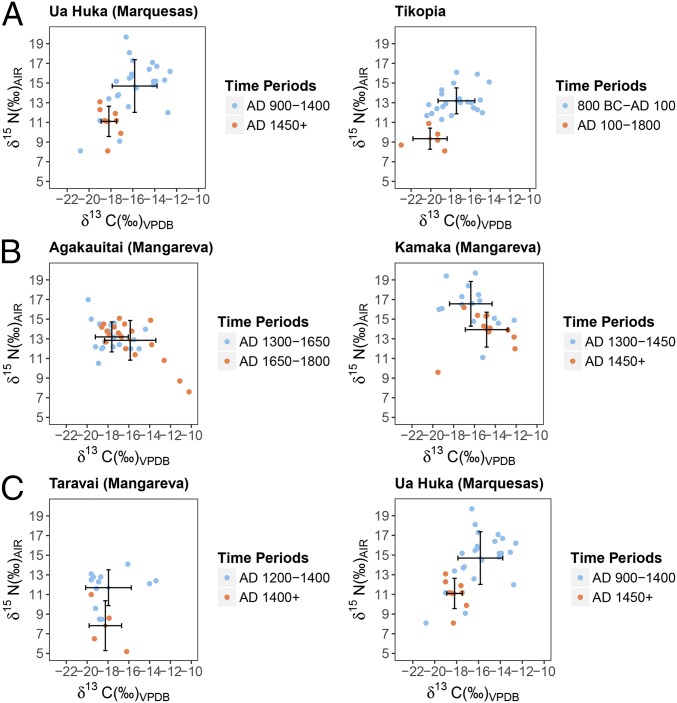Fig. 3.
Significant shifts in mean δ13C and δ15N values occurring at key transitions in site use history. (A) Significant shifts to lower δ15N and lower δ13C on Ua Huka and Tikopia mark transition from reliance on native fauna to intensive terrestrial agricultural production. (B) Continued access to marine resources is apparent on Agakauitai and Kamaka Islands, where in both cases, δ15N values remain consistently high, and δ13C values become lower through time. (C) Intensity of human site activity influences rat δ13C and δ15N values, where rat δ15N becomes significantly lower (Taravai and Ua Huka) and δ13C becomes significantly higher (Ua Huka) after humans are no longer present to subsidize rat diet with marine and other high trophic level resources (61, 62).

